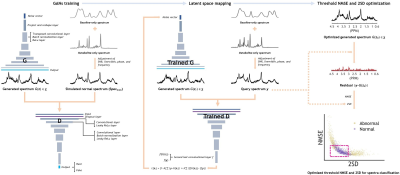Joon Jang1, Hyeong Hun Lee1, Ji-Ae Park2, and Hyeonjin Kim3,4
1Department of Biomedical Sciences, Seoul National University, Seoul, Korea, Republic of, 2Division of Applied RI, Korea Institute of Radiological & Medical Science, Seoul, Korea, Republic of, 3Department of Medical Sciences, Seoul National University, Seoul, Korea, Republic of, 4Department of Radiology, Seoul National University Hospital, Seoul, Korea, Republic of
1Department of Biomedical Sciences, Seoul National University, Seoul, Korea, Republic of, 2Division of Applied RI, Korea Institute of Radiological & Medical Science, Seoul, Korea, Republic of, 3Department of Medical Sciences, Seoul National University, Seoul, Korea, Republic of, 4Department of Radiology, Seoul National University Hospital, Seoul, Korea, Republic of
Our unsupervised deep learning-based approach could be an option in addition to the previously reported supervised deep learning-based approaches in the binary classification of the quality of human brain spectra at 3.0T with an extended abnormal spectra regime.

Fig. 1. A
schematic of the optimization of the AnoGAN. First, the generator G and the
discriminator D are simultaneously trained. Second, using the trained G and D,
the noise vector in the latent space is iteratively optimized by latent space
mapping. Third, the NMSE and 2SD are obtained for all data in the validation
sets. Then, the optimal threshold NMSE and 2SD values in the classification of
spectra into normal and abnormal classes are determined from the NMSE-2SD space.
Finally, the optimal threshold NMSE and 2SD values are used on the test sets.

Fig. 2. The representative query, AnoGAN-generated, and
residual spectra for the abnormal spectra groups. (A)-(G) The input (query) spectra
to the AnoGAN from (A) Specano.SNR, (B) Specano.LW, (C)
Specano.GABA, (D) Specano.mI, (E) Specano.NAA,
(F) Specano.multimeta, and (G) Specano.all. (H)-(N) The
corresponding AnoGAN-generated spectra. (O)-(U) The residual spectra between
the input and the AnoGAN-generated spectra. The abnormal spectral parameters and
their values in the simulation are shown in (A)-(G) (the unit of the metabolite
concentration is mmol/L).